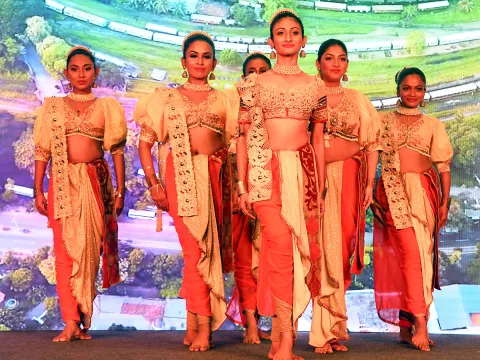
Roundup ready soybean is..
Length of the DNA molecule with 900 nucleotides is 1) 1530 Å 2) 3060 Å 3) 6120 Å 4) 715 Å
Unit- III, IV & V of Second year
In the last and concluding part of the series of EAMCET model papers, in the second year syllabus Unit-III , Unit-IV and Unit-V is being discussed. All are of the related topics dealing with classical and molecular genetics. Some sub-sections of Molecular genetics are a new addition to the old syllabus. Both long term and regular students feel difficult to understand these chapters. Most of the question will be knowledge based and easy questions. Problems on DNA and genetics is a regular feature in EAMCET exams. One or two problems may be given from these units. Practice is essential for this type of questions to save time on solving the questions. In Biotechnology part of the syllabus not more than one question can be expected whereas in the application part knowledge based questions can be asked.
Model questions:
1. Recessive trait in the pea plant
1) Yellow pod 2) Yellow seed 3) Green pod 4) Violet flowers
2. Wrong statement regarding monohybrid cross
1) All F1 plants look alike
2) In F2 generation 50% are homozygotes
3) Alleles are separated in to gametes
4) Two different genotypes are observed
3. The number of F2 classes in dihybrid cross
1) 9 2) 6 3) 4 4) 1
4. One of the scientists who rediscovered Mendel's results
1) Morgan 2) Tschermark 3) Sutton 4) Sturtevant
5. Assertion(A): Deletion and insertion of base pairs of DNA cause frame shift mutation
Reason (R): Genetic is triplet codon without overlapping and commas.
1) Both A, R are true and R is the correct explanation of A.
2) Both A, R are true but R is not the correct explanation of A.
3) A is true but R is false
4) A is false but R is true
6. In a population of pea plants the percentage of RrYy is
1) 40 2) 20 3) 25 4) 33
7. True statement regarding reasons for selecting Pisum sativum by Mendel for his hybridization experiments
A. Though bisexual it is easily cross pollinated
B. It can also self fertilized
C. It shows seven contrasting characters
D. It is perennial and produce many seeds
1) A, B & C 2) B, C & D
3) C, A & D 4) A & B
8. In Antirrhinum majus colour of the flower can be red or white or pink. True statement regarding this is
1) Colour of the flower is controlled by three different genes
2) Colour is multiple allelic. Red dominant over pink and white.
3) Red and white are true breeds. Red is not completely dominant over white
4) Colour is biallelic but do not segregate .
9. In a population of 936 plants percentage of genotype AABb is 1) 117 2) 702 3) 468 4) 434
10. In a cross between a homozygous dominant and homozygous recessive parents
A. All the F1 generation individuals show similar phenotype
B. Parental traits reappear in F2 generation
C. Equal ratio of reciprocal heterozygotes appear in F2 generation
D. Half of the F2 individuals are homozygous
1) A & B 2) A, B & C
3) A, B & D 4) A, B, C & D
11. In garden pea Tallness (T) is dominant over dwarf (t). Green pods (G) are dominant over yellow (g). What will be the appearance of the offspring of the cross TTGg x ttGg
1) All tall and green
2) All tall plants with green or yellow flowers.
3) Some are dwarf green and some are tall yellow
4) All tall and yellow
12. True statement regarding codominance in Lens culinaris for seed coat is
1) All F1 hybrids show dominant traits
2) Half of the F2 generation shows dominant traits.
3) Half of the F2 generation shows both traits.
4) One fourth of F2 generation shows both traits
13. In a population of true breeding plants of Antirrhinum white flowers are 144. The number of red flowers is
1) 144 2) 288 3) 432 4) Nil
14. RNA functions as a structural molecule in
1) Some enzymes
2) Inner membrane of mitochondria
3) Ribosomes 4) All the above
15. The distance between two base pairs in a nucleatide strand is
1) 0.34 Å 2) 20 Å 3) 2.7 Å 4) 3.4 Å
16. Flow of information from RNA to DNA takes place in
1) Prokaryotes 2) Eukaryotes 3) HIV 4) fX 174
17. Histone proteins are rich in
1) Lysine and Arginine
2) Cysteine and methionine
3) Aromatic amino acids
4) Valine and Leusine
18. In the lytic cycle of viral infection, if phage coat is labeled with radioactive sulphur
1) All the progeny resulting from the infection will have radioactive sulphur
2) Some viral particles will have radioactivity
3) None of the progeny will have radioactive sulphur.
4) Only one of the progeny will have radioactive sulphur.
19. hnRNA is transcribed by
1) RNA polymerase I
2) RNA polymerase II
3) RNA polymerase III
4) DNA polymerase.
20. Assertion (A): Leusine is coded by six codons
Reason (R): Code is degenerate.
1) Both A & R are true and R is the correct explanation of A.
2) Both A & R are true but R is not the correct explanation of A.
3) A is true, R is false
4) A is false, R is true.
21. Number of Hydrogen bonds in a DNA molecule of 1 kbps length with 200 Adenines is
1) 1400 2) 2800
3) 2400 4) 2000
22. Length of the DNA molecule with 900 nucleotides is
1) 1530 Å 2) 3060 Å 3) 6120 Å 4) 715 Å
23. RNA is less stable than DNA due to
1) Lack of double strand in RNA
2) 1 RNA cannot generate its replica
3) Smaller size of RNA
4) Presence of 2'OH in the pentose sugar of RNA.
24. Wrong statement among the following
1) RNA cannot mutate
2) RNA viruses are less stable
3) RNA can code for protein 4) RNA can code for DNA
25. Location of Promoter in an operon is
1) Immediately upstream to structural genes
2) Immediately downstream to operator genes
3) Between repressor and operator
4) Upstream to reprssor genes
26. In the absence of inducer in the lac operon is
1) Transcription takes place
2) Repressor cannot be synthesized
3) Transcription do not start
4) Translation does not take place.
27. Assertion(A): In bacteria translation and transcription takes place simultaneously.
Reason(R): In bacteria nuclear membrane is absent
1) Both A and R are true and R is the correct explanation of A.
2) Both A and R are true but R is not the correct explanation of A.
3) A is true, R is false
4) A is false, R is true
28. True statement regarding Griffith's experiment
I. Biochemical nature of genetic material is known.
II. Experimental bacteria is Streptococcus pneumoneae.
III. Heat killed virulent bacteria is transformed.
IV. Mice developed resistance to avirulent bactereia
1) I & II 2) I, III & IV
3) Only II 4) I, II & IV
29. Roundup ready soybean is
1) Herbicide tolerant
2) Pods are round and inflated
3) Soybean with reduced maturing time
4) Soybean with high protein
30. Bt cotton is resistant to
1) Viruses 2) Insects
3) Fungi 4) Herbicides
31. Golden rice "Taipei" is rich in
1) Vitamin B 2) Vitamin A 3) Vitamin C 4) Vitamin K
32. Flavr Savr is
1) A gene for flavour
2) Bruise resistant tomato variety
3) Technique in genetic engineering
4) Fungus resistant potato variety
33. Bacterium used in producing transgenic plants.
1) Bacillus thuringienesis 2) Bacillus subtilis
3) Escherechia coli 4) Agrobacterium tumifaciens.
34. Transgenic potatoes are resistant to
1) Phytophthora 2) Pseudomonas 3) Cold and drought
4) Bacterial rot
35. Polymerase chain reaction (PCR) is a technique of
1) Gene insertion 2) Gene Isolation 3) Gene multiplication
4) Gene sequencing
36. Male sterility is induced by genetic engineering in 1) Carica papaya 2) Brassica napus
3) Lycopersicon
4) Brassica nigra
KEY
1) 1 2) 4 3) 3 4) 2
5) 1 6) 3 7) 4 8) 3
9) 1 10) 4 11) 2 12) 3
13) 1 14) 3 15) 4 16) 3
17) 1 18) 3 19) 2 20) 1
21) 2 22) 1 23) 4 24) 1
25) 3 26) 3 27) 1 28) 3
29) 1 30) 2 31) 2 32) 2
33) 4 34) 1 35) 3 36) 2













